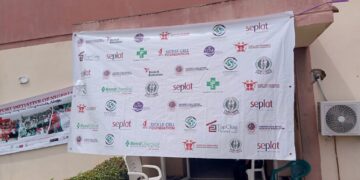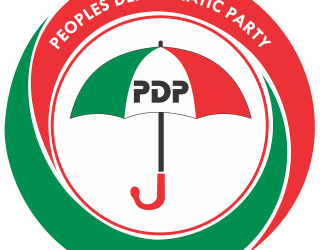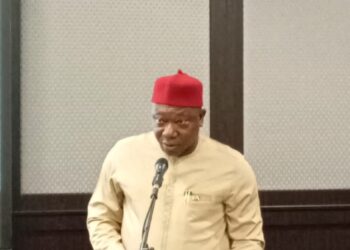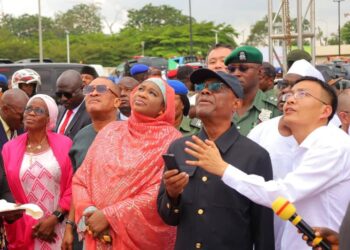In line with the decade of action , realizing SDGs 2020-2030 agenda, the mission and vision of government agencies, parastatals and departments must be in tandem with the present realities.
Therefore, efforts by the Financial Reporting Council, FRC to implement the already reviewed annual fee due for over two years cannot be over emphasized.
The challenges posed and identified by Manufacturers Association of Nigeria (MAN), as the umbrella body of companies operating in Nigeria may be normal and usual resistance to positive changes, posed by such bodies in the development, improvement and payment of dues across board.
But , irrespective of that , FRC under the leadership of Dr Rabiu Onaolapo Olowo has developed a new template, innovations and initiatives to drive the new council in line with not only the economic indices and realities in the country, but global requirements.
This is in accordance with the zeal to generate more revenues, increased revenue generation for remittances into the federation account to enable government meet up it’s obligations, through internal mechanism and revenue drive .
With the global standards and realities, FRC cannot be operating under the cocoon of archaic policies and programs, leaving behind the modern and modest standards of International Financial Reporting Standards (IFRS), among others requirements.
Penultimate, the experience of the council towards payment of dues and remittances had been lackadaisical and laced with various resistances , litigations and sharp practices, particularly before the new fee reviewed under the guise of many anomalies, which MAN had overlooked .
Therefore, as the administrative head charged with controls and regulations, The Financial Reporting Council, FRC cannot be seen to be underpinned between new evolution and old order , as a government agency under an act amended , the singular decisions to review its activities is encumbered as an independent entity.
Experience have showed that some publicly traded companies, listed on the Nigerian Stock Exchange (NSE), continue to underreport the claims and litigation section of their annual reports, This is despite the Financial Reporting Council of Nigeria (FRC)’s pledge to curb this before now.
The companies, published their 2023 audited financial reports at various times in 2024. However, each report contained figures lower than what was earlier revealed in a 2023 report.
According to the reports, the companies claimed cases against them in court amounted to huge amount .
“There are certain lawsuits pending against the companies in various courts of law. The total contingent liabilities in respect of pending litigations as at 31 December 2023 is ₦7.42 billion.”
“Some companies had the highest reported figure for claims and litigation of some companies in 2023. They stated that the cases against them amounted to N1.008 trillion claims. However, by June 30, 2024, the figure had become zero.”
This is at variance with FRC position, were many companies were underreporting their claims.
Since litigations may not stand the taste of time as adopted by previous leadership, the best solution is to effect an administrative decision beyond stagnating the activities of the new council and effect a new lease of life into the organization, through the enactment of the new regulations, reviews and controls.
“Not disclosing these claims in their annual reports for over a decade violates the International Financial Reporting Standards (IFRS), hence the new leadership envisaged in its new position and decision.”
“Despite the FRC’s vocal commitment to addressing inaccurate financial reporting, it was revealed that partial compliance two years later.”
“The International Financial Reporting Standards (IFRS) are a set of accounting standards introduced to govern how particular types of transactions and events should be reported in financial statements. They were developed by the International Accounting Standards Board (IASB).”
“This IASB has a set of accounting standards that guide certain aspects of financial reporting.”
“IAS 37 is a standard for accounting for and disclosing provisions, contingent liabilities and assets.”
It describes contingent liabilities as “possible obligations whose existence will be confirmed by uncertain future events that are not wholly within the control of the entity”.
“An example is litigation against the entity when it is uncertain whether the entity has committed an act of wrongdoing and when it is not probable that settlement will be needed,” it states.
“A contingent liability is not recognised in the statement of financial position. However, unless the possibility of an outflow of economic resources is remote (distant), a contingent liability is disclosed in the notes.”
“Going by this provision, all defendants in the suit had contingent liabilities of at least N1.2 trillion each.”
“It is important to highlight that companies in business either have assets or liabilities. Assets add to the financial health of the company while liabilities are losses. ‘Contingent’ is a term that refers to something that is subject to probability or chance, and just as there are contingent liabilities, there are contingent assets.”
“Some companies were taking advantage of an exploitable gap in the IAS37 to operate .”
Interestingly, Council generally observed an exploitable gap in disclosure requirements as per IAS 37: ”
Provisions, Contingent Liabilities and Contingent Assets, especially as it relates to Contingent Liabilities. Paragraph 92 of IAS 37 which states that ‘In extremely rare cases, disclosures of some or all of the information required by paragraph 84-89 can be expected to prejudice seriously the position of the entity in a dispute with other parties on the subject matter of the provision, contingent liability or contingent asset.”
” In such cases, an entity need not disclose the information, but shall disclose the general nature of the dispute, together with the fact that, and reason why, the information has not been disclosed’ is instructive in this regard. This implies that entities are not compelled to disclose number of claims and financial implications thereon as such information has the potential to prejudice their position in disputes with other parties.”
“In the course of the reports, some companies declared huge amount of N11.3 trillion in contingent liabilities in its 2023 annual report; the highest it had ever declared since 2014.”
However , to achieve the global SDGs 2020-2030 agenda with Nigeria playing a leading position, the ongoing sharp practices, inactions, anti government and anti council policies by companies in the area of declaration of transparent and accountable financial reports , that is in tandem with the global standards and practices must be adhered to, in line with the intention of the new management and leadership under Dr Rabiu Onaolapo Olowo as the Executive Secretary, Chief Executive Officer ES CEO of Financial Reporting Council, FRC.
Written BY ABUBAKAR YUSUF on yus.abubakar3@gmail.com.















